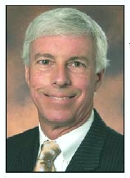
|
Winter 2007
|

|
Winter 2007
|
Yucca Mountain Project: Year in Review
A New Timeline
The Department of Energy (DOE) announced in July of 2006 that it had set a new target date for the opening of the proposed repository. Under the new schedule, the Yucca Mountain repository will be ready to start accepting shipments of nuclear waste in March of 2017. DOE had previously projected that the repository would be operational by 2010. That deadline was abandoned two years ago due to budget shortfalls and various scientific and regulatory obstacles. Assessment of Yucca Mountain Redesign
DOE announced in October of 2006 that it plans to prepare a supplement to its final environmental impact statement (EIS) for the proposed Yucca Mountain repository. This announcement follows the Energy Department’s plans, first revealed in October of 2005, to shift the design of the repository in order to improve safety and performance. This new “clean” design calls for nuclear waste to be delivered to the repository in standard canisters that would not require substantial onsite handling prior to being placed in a waste package for disposal.
|
Revival of the Mina Rail Route Option
In May of 2006 DOE made a decision to reopen consideration of the so-called Mina rail route. This decision followed a reversal of opinion by the Walker River Paiute Tribe, which had previously been opposed to the shipment of high-level nuclear waste through its reservation. The route in question would cut through the Walker River Indian Reservation north of Hawthorne.
|
New Director Confirmed for OCRWM
The U.S. Senate confirmed
Edward “Ward” Sproat to direct DOE’s Office of Civilian Radioactive Waste
Management in May of 2006. Formally a nuclear industry executive, Sproat is the sixth director to lead the Yucca Mountain program since its inception in 1983.
|
Legislation“Fix Yucca” legislation was introduced in the U.S. House and Senate during the 2006 session. This bill was aimed at upping repository capacity and speeding up the licensing process. The bill stalled in committee and was not voted on in 2006 (Las Vegas Review- Journal, 6/28/06). Senator Pete Domenici (R-N.M.) introduced the Nuclear Waste Acceleration to Yucca bill in September which would have paved the way for interim storage of nuclear waste at Yucca Mountain. The bill did not make it to the Senate floor before the end of the 2006 session (Las Vegas Review-Journal,9/28/06). Senator Harry Reid (D-Nev.) as the 2007 Senate majority leader, said bills to allow nuclear waste to be sent to Nevada on an early schedule, or would speed land withdrawals, permits and licenses, would never would see the Senate floor. (Las Vegas Review- Journal, 11/9/06). |
Litigation In September of 2006, a panel of federal judges dismissed a Yucca Mountain lawsuit filed by the State of Nevada. The lawsuit sought to force the Nuclear Regulatory Commission (NRC) to change a waste confidence rule, which Nevada claimed would bias the NRC in favor of approving the repository. The suit was dismissed on technical grounds (Las Vegas Review-Journal 9/28/06).
|
TransportationDOE decided in 2006 to reopen its study of the so-called Mina rail route to Yucca Mountain. This decision follows a reversal of opposition by the Walker River Paiute Tribe, which had originally maintained that it would not allow shipment of nuclear waste through its reservation. DOE has announced plans to prepare a supplemental environmental impact statement to assess the suitability of the route (Las Vegas Review-Journal, 10/12/06). |
RegulationsThe Environmental Protection Agency (EPA) indicated that it expects to finalize its Yucca Mountain radiation standard by the end of 2006. A U.S. District Court overturned the agency’s original radiation standard in 2004. The EPA released a reformulated standard in August of 2005. Once this new standard is finalized, the NRC will determine whether it is sufficient to protect public health and safety (Las Vegas Review-Journal, 5/6/06). |
DOE Holds Yucca Mountain Hearings in Nevada….
The Department of Energy (DOE) held hearings in various Nevada locations in order to inform the public about the upcoming study of the so-called Mina route and collect public comments on the matter. Hearings held in Hawthorne and Goldfield were well attended, with a majority of the participants expressing support for the Mina route.
Yucca Mountain Chief Notes Concerns with Project
Ward Sproat, head of the Energy Department’s Office of Civilian Radioactive Waste Management
(OCRWM), stated that the project suffers from a “quality problem” that must be fixed before the licensing process for the proposed repository begins. Sproat delivered his assessment to the Nuclear Regulatory Commission in September.
|
In Memorial
John Arthur III, 53, deputy director of the Department of Energy’s Yucca Mountain Project
in Las Vegas, died on December 26, 2006, of cancer. John’s 27 year career as a public servant for DOE included managing operations for the nation's largest environmental cleanup and nuclear materials management programs. |
|
Nuclear Waste Update |
|
Site Index |